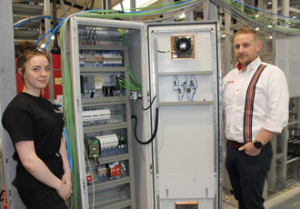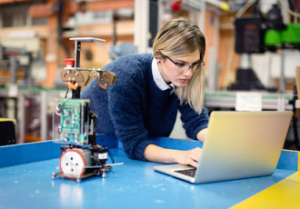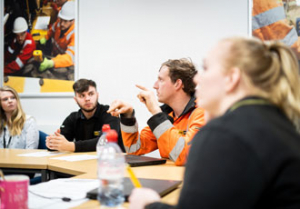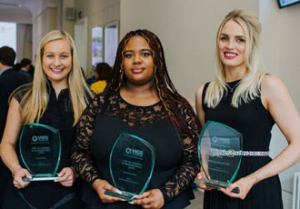Have we done enough?

Recent research carried out by the Subcon engineering show here in the UK has suggested that there has been a massive leap in business over the past few years and therefore we don’t need to do anything else to encourage women into manufacturing as a career. In 2018 a similar survey was carried out and showed seven percent of people within the industry believed everything that could be done to encourage women into the field of engineering has been done. Now in 2019 the results reflect very differently with now 56% people thinking the job is done.
What does ‘the job is done’ look like?
But can we ever say the job is fully done, and if so what marks the moment where we know we have completed it? And who makes that decision – is it for women to say yes we feel equal, or for us all to say, yes we have achieved equality?
The answer to this question is what does equality look like? Reading a lot of articles, attending a lot of talks and speaking to a lot of women there are many different answers to this. Firstly one sign of equality would be that no one assumes a certain gender wouldn’t be suited to certain jobs. I for one am tired of hearing: “Women wouldn’t want to do that job” or “That’s a man’s job.” Since when were certain tasks and jobs gender specific?
Second is equal pay. Iceland have very recently made it illegal for men to be paid more than women, so why can’t the UK and the rest of the world follow in their footsteps. When we say equal pay, it means equal people, in the same or similar role with the same capabilities. There should be no such thing as the ‘gender pay gap.’
Air Vice Marshall Sue Gray at a recent panel talk I attended said: “There hasn’t yet been enough change. I work in the forces which is quite equal in terms of pay and opportunity but there is still this stigma of it being all cliquey and it’s all the older men sticking together. We are getting there especially in terms of pay, but we need to keep going.”
What has been done over the past ten years?
From government imitations to quotas, how have we enticed more women into the manufacturing and engineering industry? The Women’s Engineering Society (WES) has done a remarkable amount of work, supporting women, connecting them to the right people in industry and more importantly allowing women to meet other women in the industry in the same position.
A tight-knit network has been formed, certainly here in the UK which I believe gives women in the industry the confidence to take that extra step, and show we are here, we are equal and we want recognition. Sophie Hutchins, Chair of the WES Younger Board said: “It is so important to create a network of people you trust, and this can be inside or outside your industry. It’s good to surround yourself with people that have had similar experiences and stories to you.”
If we look back at the statistics in 2009 the number of women in engineering was 10.4%, in 2017 it had increased to 11% and now there is 16%, reported in the last Engineering 2018 report. So it is easy to see over ten years we have come a fair distance, but STEM subjects are still only being undertaken by 15% of girls, we need that number to be 51%!
What will happen if we do no more?
It is also no longer an issue just for women, it is in the interest of every gender to encourage each other into the industry for the sake of the skills shortage. Emma Howard Boyd, Chair of the Environment Agency recently gave a talk entitled; ‘The 30% club – Promoting Diversity’ and said: “100 years on and still only 11% of the engineering society is made up of women in charge, this is no longer a woman’s problem, but an issue for everyone as so much talent is being missed.”
If we don’t make a change we are ruining the ecosystem, as every industry needs a diverse workforce – men and women think and work differently, and you need both sides of the coin.
Arguably quite a dramatic outcome, but at the recent centennial celebration of WES, the idea that women in engineering could be written out of history if we do not carry on encouraging more females was discussed a fair amount. It’s important to remember the past, and how women were regarded and treated in an industry such as engineering. Dawn Childs, WES President said: “We have to remember the past, no matter how bad it is, to ensure we move forward and it never happens again.”
What has been the most effective method of encouraging women into engineering?
Going into schools and universities to encourage girls from a young age is crucial as everyone I have spoken to in this industry has pointed this out. So without sounding like I’m on repeat this method to me does stand out as being one of the best ways to increase the number of females. Petra Gratton, a previous WES President backed up this point and said: “We need to tackle the leaky pipeline, as lots of girls get into engineering at an early age and then don’t make it through. We should give everyone who starts studying in engineering a mentor to help them all the way, and then ultimately get into the industry the end of their education journey.”
The saying; ‘I can see the light at the end of the tunnel’ essentially means you are powering through because you can see the end, you have something to look and aim towards, and I believe role models have the same effect. A lot of research has been done to prove the power of role models, but quite simply if the younger generation has something and someone to look up to, it is far more motivating than just words. Childs said: “Role models are so important, as you need to have goals in life, and it’s so refreshing to see as a part of the WES society so many women wanting to help each other.”
John Edmonds, author of the novel; ‘The Stalled Revolution: Is Equality for Women an Impossible Dream?’ at a recent conference said: “Quotas are a really successful way of helping women, as they can really help the numbers, and they have proven that decisions are made in a better way and in a more civilised way.”
Just women?
Maybe one of the issues here is that we are singling women out, and maybe one of the biggest problems is we should just be encouraging people into the industry. If we are basing it on statistics, then 25.5% of engineering and technology degrees are awarded to people from black and minority backgrounds according to the EngineeringUK report. While 14% of the UK population are from a minority background, only six percent of people in a professional engineering role are from this minority background – so should we be encouraging more people from a diverse background too?
The Engineer did some research a few years ago which showed 71% of white engineering graduates find full-time jobs after around six months, compared to the 51% of black and minority ethnic graduates. Although we don’t want to live in a world where you feel you are hired based on your gender or race, maybe it is time for a bit of shake up to see a more diverse workforce in the engineering industry.
Therefore, although arguably a nice thought, I don’t believe we are in a position where we can say enough has been done to encourage women into the industry, and if anything we need to increase the support and start encouraging people from diverse backgrounds and not always focus on gender.
For similar stories check this one out.
Similar articles
More from Electronic Specifier
- Building the case for construction offices in 2021 20th May 2021
- UK construction: is the industry finally on the up? 26th August 2020
- Speaking to a younger generation of women in tech 11th August 2020
- Engineering firms encouraged to get ‘2020’ vision 6th January 2020












Write a comment
No comments